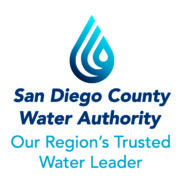Wanted: Large Landscapes for Program Proven to Reduce Irrigation Water Use
Participants receive training, state-of-the-art tools to cut outdoor demand by at least 20 percent.
The San Diego County Water Authority is seeking approximately 20 commercial-scale landscapes for participation in a program that has demonstrated significant outdoor water-use reductions through a combination of training, hardware upgrades and technical assistance valued at more than $15,000 per site.
Applicants have until March 31 to file statements of interest in the WaterSmart Landscape Efficiency Program, using the form at watersmartsd.org. An interest meeting is scheduled from 2-4 p.m. on Feb. 15 at San Diego Gas & Electric’s Energy Innovation Center, 4760 Clairemont Mesa Blvd.
In two earlier iterations of the landscape efficiency program, water savings topped 30 percent, exceeding the target of 20 percent. Participating sites have included parks, apartments, schools and homeowner association common areas. Project sites are typically about four irrigated acres (though they are often part of a larger property), and they must be on dedicated potable water meters.
“We are looking for places to showcase significant water savings without compromising landscape quality by employing best practices for irrigation management and top-tier technology,” said Carlos Michelon, principal water resources specialist at the Water Authority. “This program is one of many ways the Water Authority continues to promote long-term water-use efficiency.”
The WaterSmart Landscape Efficiency Program requires joint participation by property owners and landscape maintenance contractors at each site. Landscape contractors receive training, assistance, and performance-based financial incentives for documented water savings. Site owners receive water-saving devices and the long-term benefits of lower water use. The program is funded mainly through a Proposition 84 Integrated Regional Water Management grant from the California Department of Water Resources.
Program benefits include leak detection and repair, irrigation system pressure regulation, improvements in distribution uniformity of irrigation water, and the installation of flow sensors and weather-based irrigation controllers. Each site is provided with a water management target that will be tracked for a year. Participants are responsible for hardware installation, landscape maintenance and other contract conditions.
From the pool of interested parties, the Water Authority will select those that best fit the program’s technical requirements and are most likely to meet the program’s demanding implementation schedule. Promising sites that aren’t selected for the program’s current round may be eligible for future rounds, depending on funding.
In addition to the WaterSmart Landscape Efficiency Program, the Water Authority offers free training to landscape professionals through the Qualified Water Efficient Landscaper program. That program, known as QWEL, provides 20 hours of training on the latest water-efficiency principles and the opportunity to earn a QWEL certificate. Information about QWEL is at qwel.watersmartsd.org.
WaterSmart Landscape Efficiency Program
A statement of interest must be filed by March 31 for sites to be considered for the program. Details and the interest form are at watersmartsd.org/watersmart-landscape-efficiency-program.




